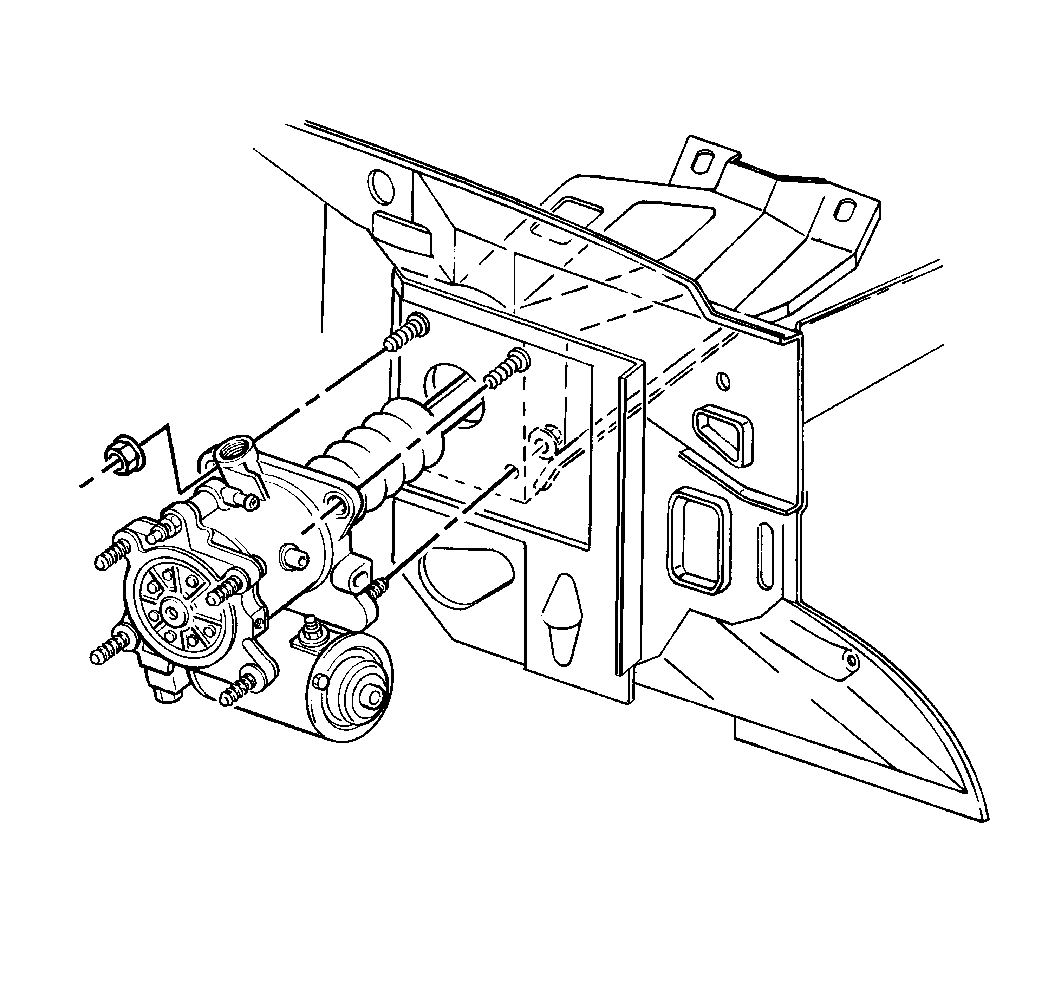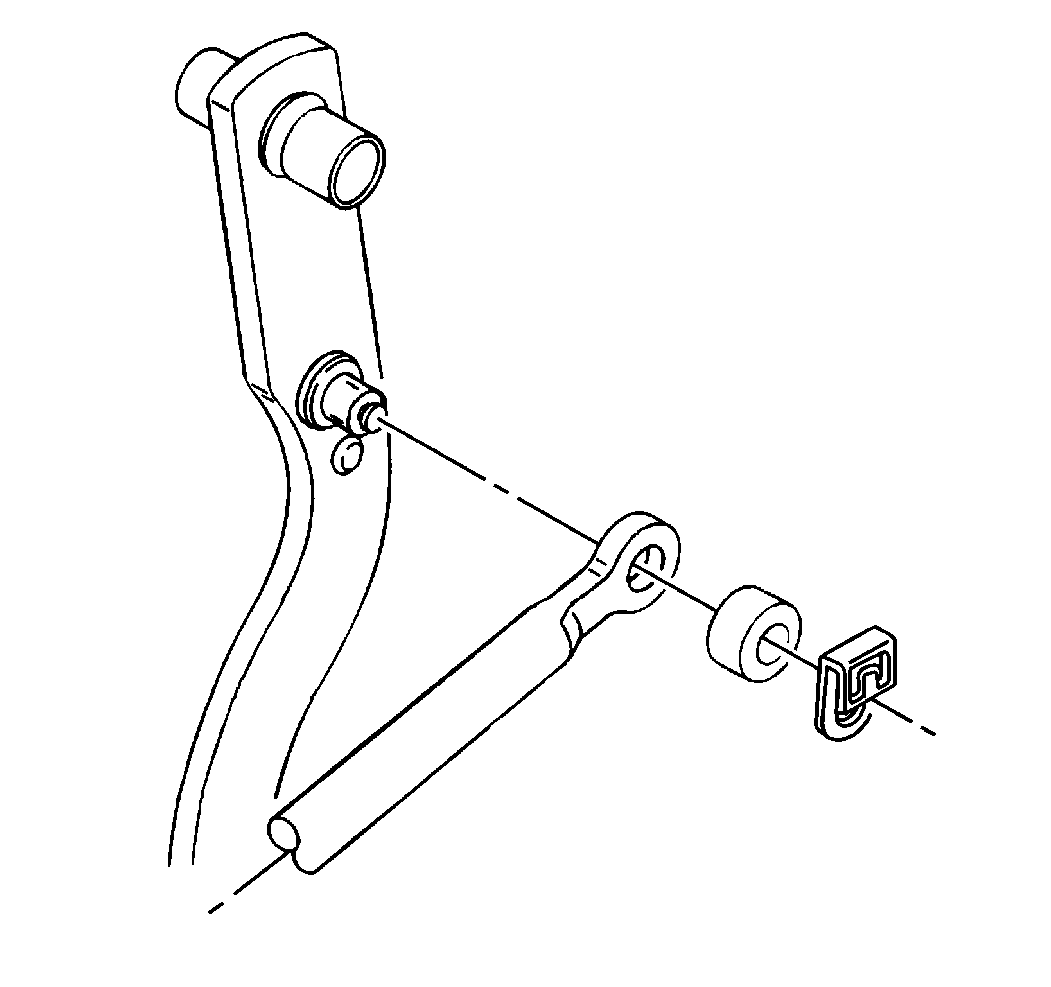Flushing the Hydraulic Booster System
Flush the hydraulic booster system when you discover
the following contaminants in the system:
Flushing involves running clean power steering fluid through the system
until the draining fluid appears the same as the clean fluid. Contaminated
fluid in the booster system can cause rubber parts to deteriorate.
| • | Clean and flush the hydraulic booster system whenever you replace
the hydraulic pump. Metal shavings from a worn hydraulic pump often contaminate
the system. |
| • | Disassemble and clean the booster head. |
| • | Replace all seals and O-ring seals. |
| • | Remove pipes and hoses and blow clean of all metal shavings. |
Removal Procedure

- Block the wheels.
- Disconnect the electrical connectors from the electrohydraulic
pump and the flow switch.
- Remove the master cylinder. Refer to
Master Cylinder Replacement
.
Position the master cylinder away from the booster head. Secure the
master cylinder in an upright position.
- Disconnect the hoses from the booster. Use a suitable container
in order to catch the fluid.
Discard the old fluid.
- Cover or plug the hoses.

- Remove the following components
from the brake pedal:

- Remove the nuts from the
inside of the vehicle.
- Remove the nuts at the booster.
- Remove the booster assembly.
Installation Procedure

- Install the booster assembly.
Notice: Use the correct fastener in the correct location. Replacement fasteners
must be the correct part number for that application. Fasteners requiring
replacement or fasteners requiring the use of thread locking compound or sealant
are identified in the service procedure. Do not use paints, lubricants, or
corrosion inhibitors on fasteners or fastener joint surfaces unless specified.
These coatings affect fastener torque and joint clamping force and may damage
the fastener. Use the correct tightening sequence and specifications when
installing fasteners in order to avoid damage to parts and systems.
- Install the nuts
at the booster.
Tighten
Tighten the nuts to 36 N·m (27 lb ft).
- Install the nuts inside the vehicle.
Tighten
Tighten the nuts to 36 N·m (27 lb ft).

- Install the following
components to the brake pedal:
- Install the hoses.
- Install the master cylinder. Refer to
Master Cylinder Replacement
.
- Connect the electrical connectors to the electrohydraulic pump
and the flow switch.
- Fill the power steering reservoir. Refer to
Checking and Adding Power Steering Fluid
.
- Bleed the power steering system. Refer to
Power Steering System Bleeding
in Power Steering Systems.
- Inspect for proper brake operation.
- Remove the wheel blocks.





